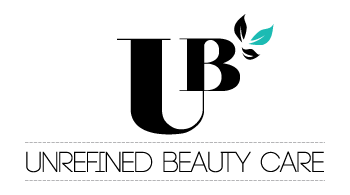
The first step to a million dollar face...(without paying a million dollars of course) is to know about the skin in general.
What is the skin?
How many of ya'll knew that the skin is the largest organ of the body? Its made up of multiple layer cells that shed and regenerate continuously once every 30 days, which is why exfoliating is necessary to remove the dead layers of skin.
The time taken for deepest layer to come to the top is 45-75 days. Now, did you know that the Skin’s other roles are: temperature regulation, insulation, sensation, synthesis of vitamin D, and the protection of vitamin B folates?
The three main layers that make up the skin are the: Epidermis, Dermis and Hypodermis (also known as Subcutaneous.) These three layers are held together by the collagen, protein and elastin fibres. Collagen provides durability and strength (stretchmarks disrupt the natural collagen production.)
Top layer - Epidermis
It is made up of 5 layers: Stratum Corneum (horny layer...yes...the horny layer), Stratum lucidum (clear layer), Stratum granulosum (granular layer), Stratum spinosum (spiny layer), melanin production, and Stratum Germinativum (basal Layer) where the cells divide and grow upwards.
Each of these layers has their own layers. The Stratum spinosum gives skin its colour.
Middle layer - Dermis
It is made up of: Blood vessels (supply nutrients to the skin), Lymph vessels (defence mechanism for the immune system), Hair follicles (protection and sebum production), Sweat glands (regulators of heat), and Pain and touch receptors (carry impulses to the brain).
Bottom layer - Hypodermis or Subcutaneous
These are fat cells that conserve body heat while protecting other organs from injury. They provide a cushioning effect and are a source of energy in lean times.
Thickness of layer varies - the thinnest layer is on our eyelids making them light and flexible, the thickest is on our hands and feet for gripping.
Anyway, enough of the Science and big words, some of ya'll probably have question marks all over your face now. No matter, now we shall move on to the different types of skin.
Different Types of Skin
There are four basic Skin types; however skin can vary at different stages of our lives due to illness or skin conditions.
Normal Skin: (Or the Sexy skin as I liked to call it)
The softer and more relevant skin is the normal skin which is clear, pimple free, soft, smooth and without any greasy or flaky areas. The skin is neither dry nor greasy and is considered to be the fine and supple surface. The inner health of the skin is shown out which is due to the circulation as well as with outstanding health.
In normal skin, the oil glands produce sebum at a sensible rate, resulting in a stabilized condition. Normal Skin looks consistently plump, moist and vibrant, but still like all other skin types, normal skin requires care and attention and benefits from cleansing, toning and moisturizing.
Dry Skin: (Or the Dry and Crusty skin, as I like to call it...I'm joking.)
Dry Skin is caused by inactive or under active oil glands that do not produce enough sebum to keep the skin naturally lubricated.
It has to be taken care of as it is more prominent and prone to ageing and other serious problems ( ...like crows feet. lol) Dry skin is fine-pored skin and has a thin papery texture which looks dull. It has a sallow tone and also is easily irritated. Those having dry skin will be experiencing from flawlessness, taut and flaky feeling and also hardly breaks into spots. It usually feels dry, itchy and is sometimes sensitive. Dry skin must be hydrated frequently from the inside (drinking fresh water) and out side (with mist). This skin type benefits from night creams, moisturizers and voila.
Oily Skin: (Or the Cocoa Butter abusers, as I like to call it...lol)
This Skin time is shiny, greasy and prone to develop acne, a condition resulting from sebum trapped inside the skin causing pus-filled lesions known as comedones; acne is very common among this skin. This skin type is able to still feel comfortable even after frequent soap-water washes. Large pores are attributes of Oily skin. After each wash the skin feels refreshed and by the midday it looks shiny. The texture of the skin is quite thick and course.
Oily skin is caused by glands that produce too much sebum, which leads to skin with a greasy, slippery texture which appears shiny and has large clogged pores.
However, in spite of the shortcoming, Oily skin generally remains looking younger and suppler over time than other skin types. Periodic herbal steam treatments and clay masks are great for this skin type.
Combination Skin Types: (I have this skin type...so I shan't mock it.)
Most people have at least two different types of facial skin at any given time. In most cases the skin tends to feel taut on and flaky on the cheeks but oily on the T-Zone (Temple Zone: forehead, nose and chin), you rarely find it vice-versa, although sometimes the area around the eyes, cheeks and mouth can be normal while the T-Zone is oily. It is known to be present with little patches and also along with very few oily patches as it is a combination of both. After each wash, some areas would appear to be smooth whereas others would feel dry and rough. The T-Zone is prone to spots as it is smooth, and it becomes shiny by midday. By estimation, most women have this kind of skin. Women with oily nose and chin with a drier forehead are categorized normal-to-combination skin type.
-Rouge

